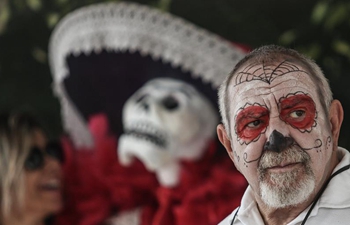LOS ANGELES, Oct. 30 (Xinhua) -- A new study conducted by U.S. anthropologists shows that people who live in modern-day nations are not any less violent than their ancestors or people who currently live in small-scale hunting, gathering and horticultural societies.
The study, published in a new edition of the journal "Current Anthropology," challenges the popular notion that as nations and modern societies develop, there are less violence and war deaths.
While larger, modern-day societies may have a larger number of soldiers or combatants who die, they represent a smaller percentage of the total population, according to researchers.
However, smaller communities are at greater risk in times of war. "Rather than being more violent, people who live in small-scale societies are more vulnerable to a significant portion of their community being killed in warfare than those living in states because, as the old saying goes, 'there is safety in numbers,'" Dean Falk, a distinguished research professor of anthropology at Florida State University, was quoted as saying in a news release.
"We recognize, of course, that people living in all types of societies have the potential not only for violence -- but also for peace," she said.
War deaths for both small-scale and more modern state societies escalate upward as populations get larger, as has been found by Falk and Charles Hildebolt, a professor from the Washington University Medical School in St. Louis.
Part of that, they believe, is because of the innovations in weapons and military strategies associated with modern life.
In addition, people who live in modern-day nations are not less violent than their ancestors or people who currently live in small-scale hunting, gathering and horticultural societies. Instead of stone axes, there are now fighter planes and more sophisticated weaponry.
In this study, anthropologists analyzed data on population sizes and death from intergroup conflicts among 19 countries that fought in World War I, 22 countries that fought in World War II, 24 human non-states and 11 chimpanzee communities.
They included chimpanzees, Falk said, because they attack and kill individuals in other groups. The found that chimpanzees on a whole were less violent than humans, which researchers believed suggests that humans developed more severe forms of warfare compared to chimps.
Similar to humans, their annual average percentage of deaths declined as the population increased, according to the study.

















